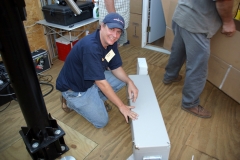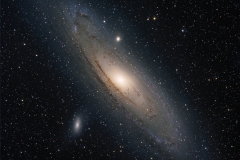 Galaxies and Milky Way
Galaxies and Milky Way
A galaxy is a collection of stars, planets, dust, and dark matter all held together by a centralized gravitational force. Our home galaxy is the Milky Way. The MW has somewhere between 100-400 billion stars and has a diameter of about 100,000 light years. One of our nearest galaxy neighbors is M31, the Andromeda Galaxy shown below. It is about 2.3 million light years from us. M31 has almost twice as many stars as the MW.
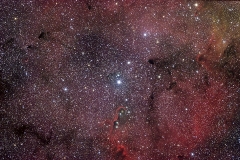 Nebulae
Nebulae
A Nebula is an interstellar cloud of dust and gases (typically hydrogen) formed around stars that are either forming, collapsing, or have exploded as a supernova. These gases and dust form beautiful objects to photograph using special cameras, filters, and optics.
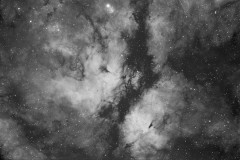 Narrowband
Narrowband
Narrowband imaging is a technique using specialized filters that only image a certain bandwidth of light. The bandwidths used are specific to certain elements, such as hydrogen. Hydrogen Alpha filters for example are very good at filtering out all light except light that is emitted from most nebulae, resulting in spectacular nebula images of great detail. These images can be added to color data, see my Nebula page, however I like how these look in monochrome.
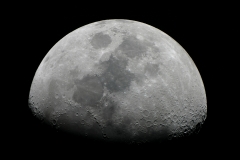 Lunar
Lunar
Taking images of our Moon has always been fun for me. The Moons average distance from Earth is 238,000 miles. The Moons apparent size to us in the sky is almost the exact same size as the Sun, which is why we get such amazing eclipse views.
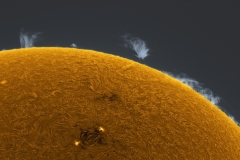 Solar
Solar
At the center of our solar system is our Sun, a massive ball of hot plasma and magnetic storms. If you take all the mass of our solar system it would almost equal that of the Sun. Our Sun is approximately 150 million kilometers from Earth and it takes her light 8 minutes, 19 seconds to arrive to reach us. The Moon, on the other hand, is approximately 384,000 kilometers from Earth. What is truly amazing is that both the Moon and the Sun have the same apparent size in our sky which makes for such beautiful solar eclipses.
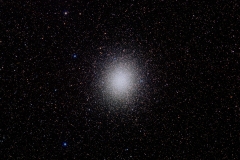 Star Clusters
Star Clusters
Star clusters are beautiful tight groups of stars, but are not galaxies themselves. There are two types of star clusters, Globular Clusters and Open Clusters. Globular Clusters consist of thousands of stars that are tightly concentrated and Open Clusters are typically only a few stars. Basically Star Clusters are large groups of stars within a galaxy, held together by a gravitational pull.
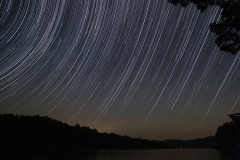 Star Trails
Star Trails
These images of the stars seemingly moving across the sky, when in fact we are the ones rotating. The North Star (Polaris) is the center of this rotation. In the old days we would take a single exposure to capture these star trails, now with modern digital cameras we can take many (hundreds) of images and stack them together to make these interesting shots.
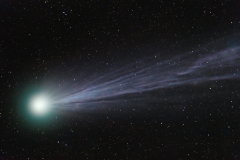 Comets
Comets
Comets are small object cruising through our solar system. As they get closer to the sun they sometime get a tail of outgasses that, in some cases, can be quite beautiful. Most comets are not visible to the naked eye however some are.
